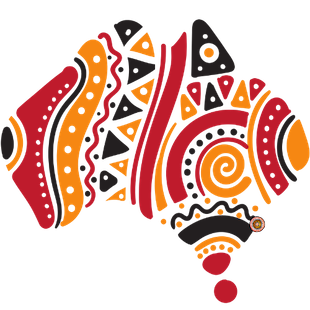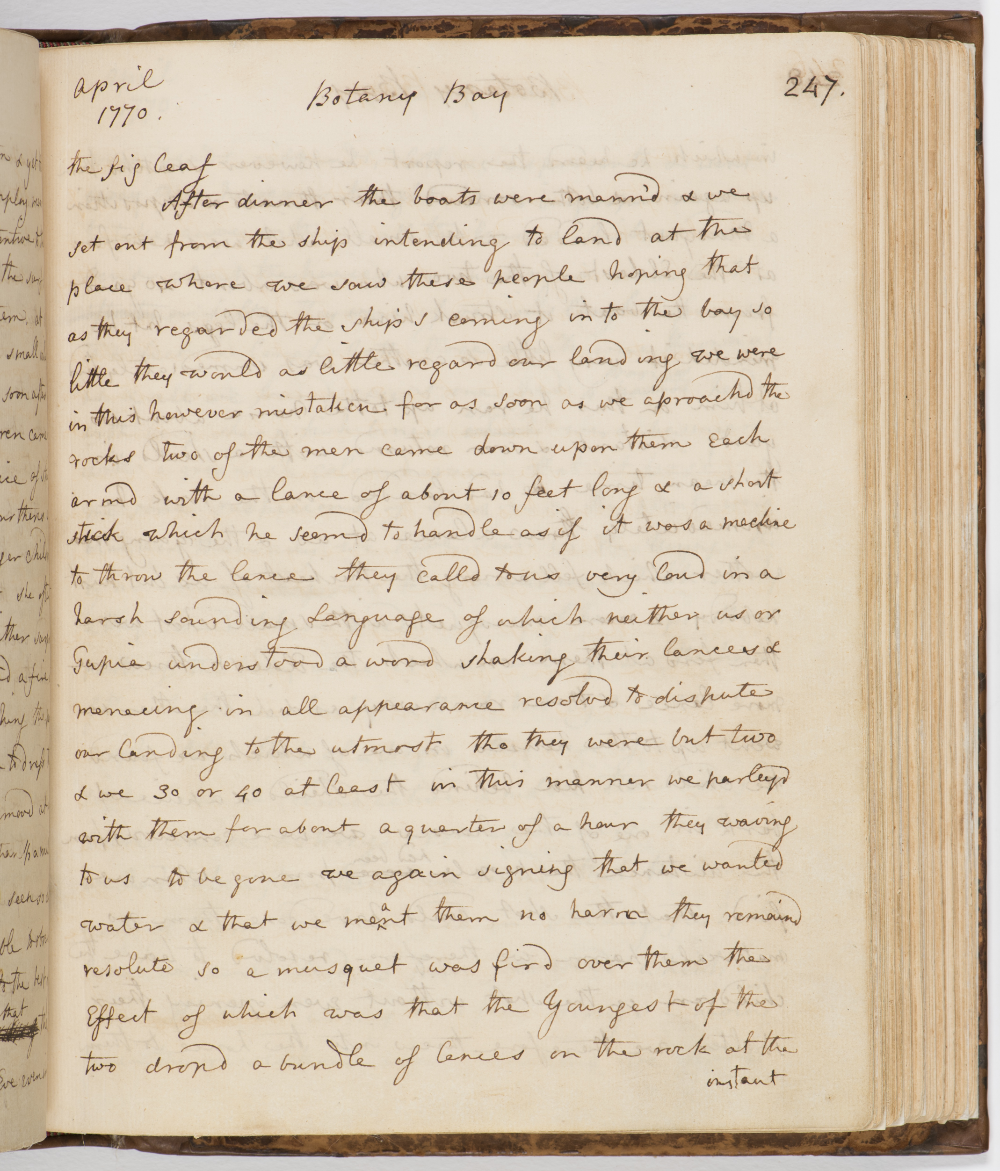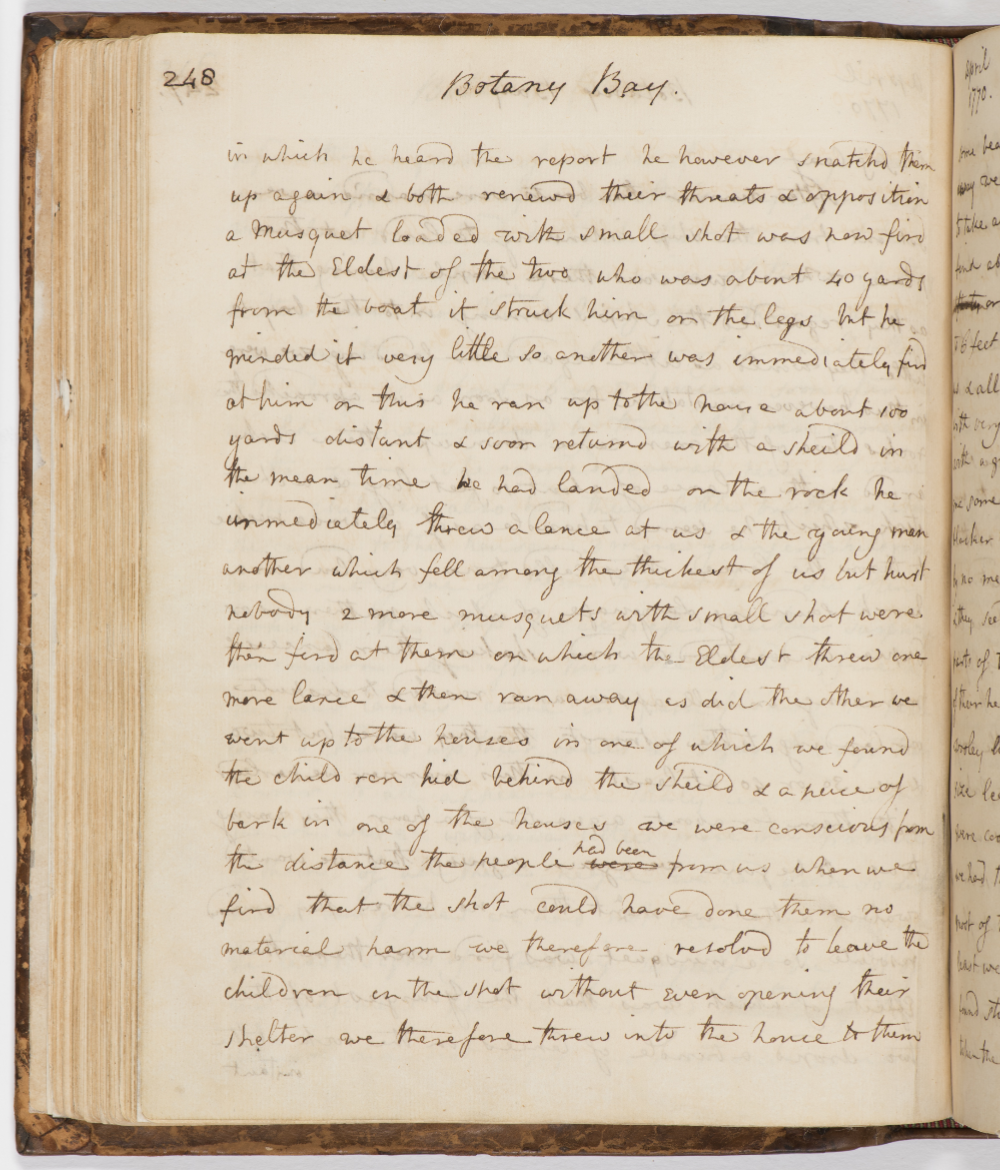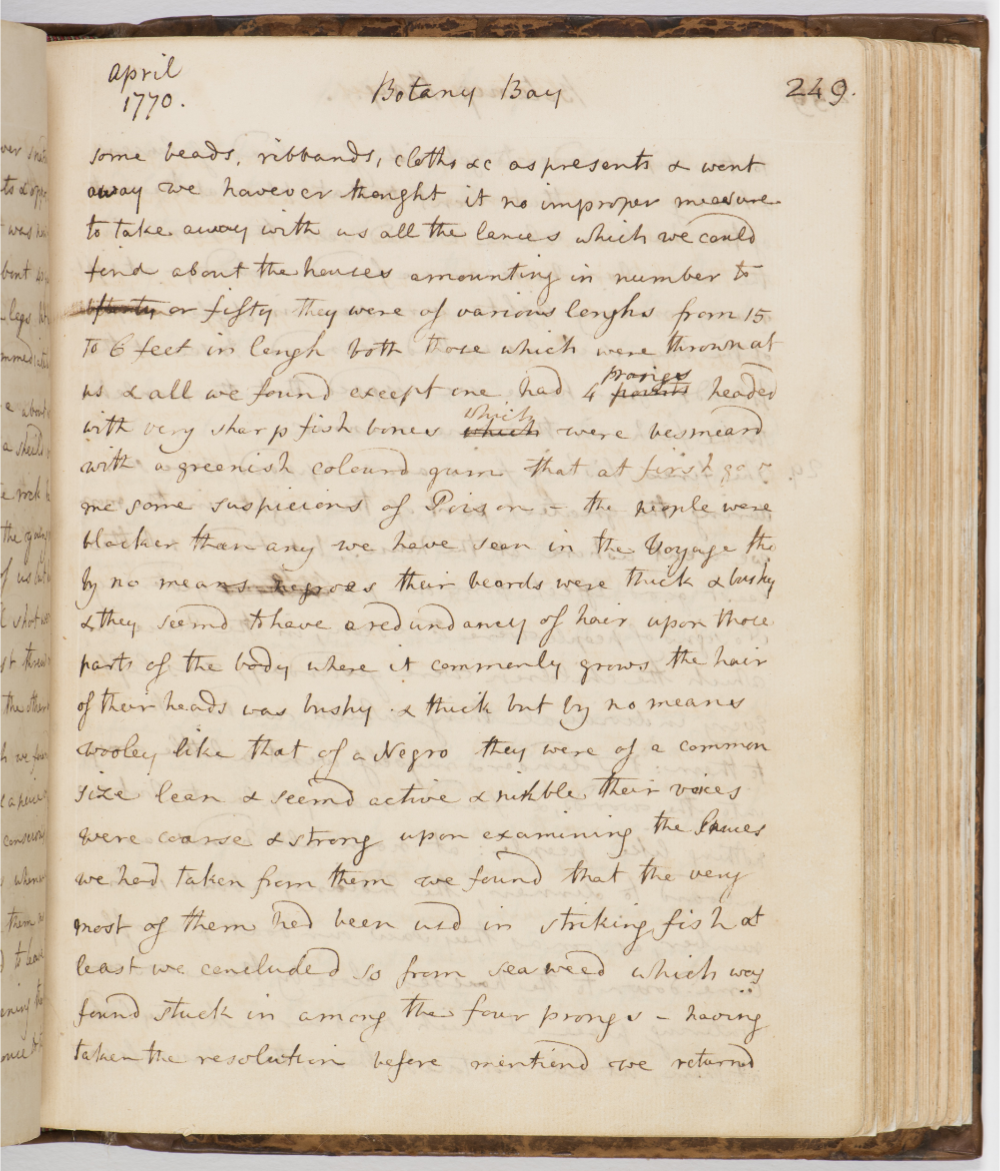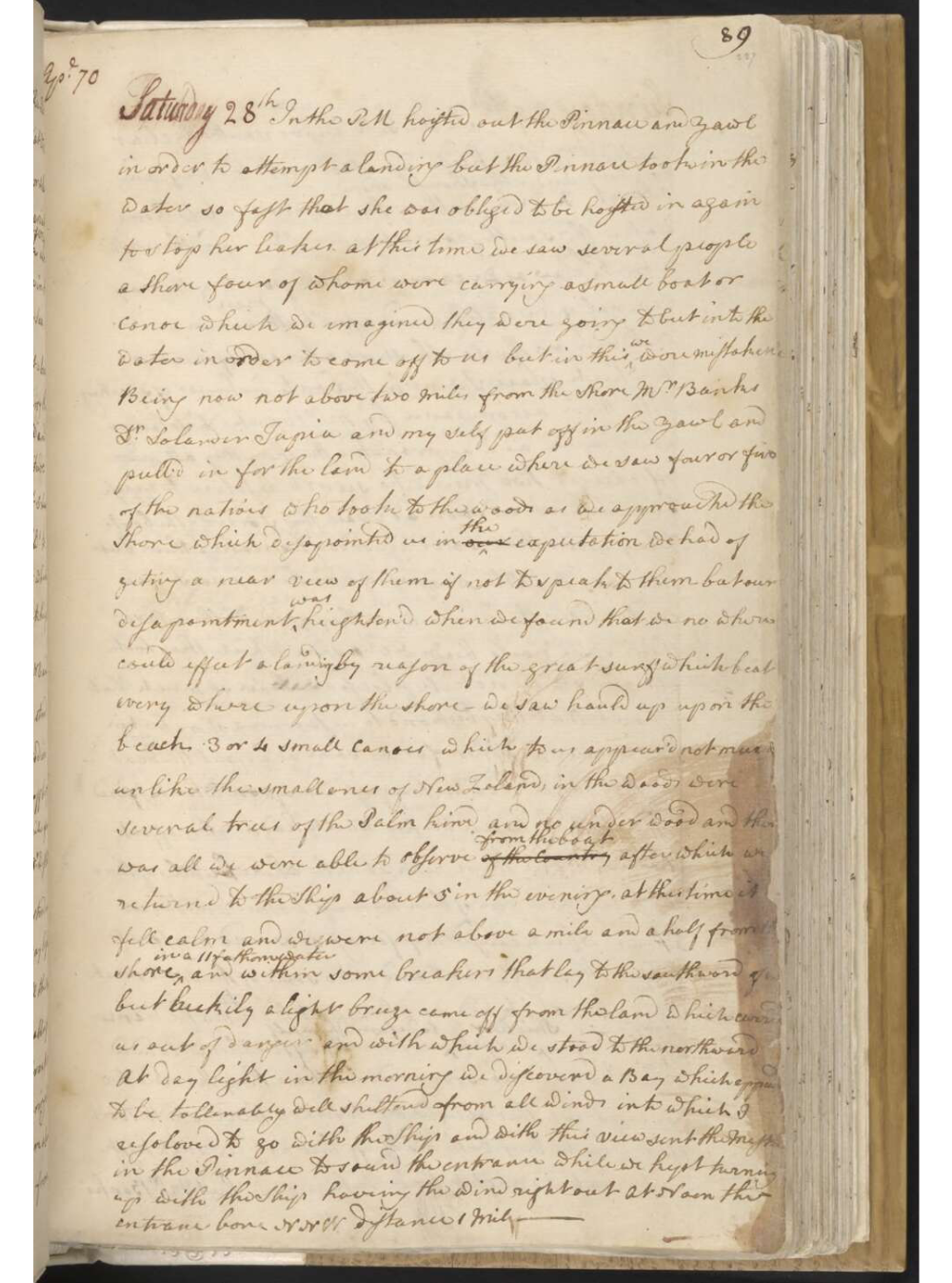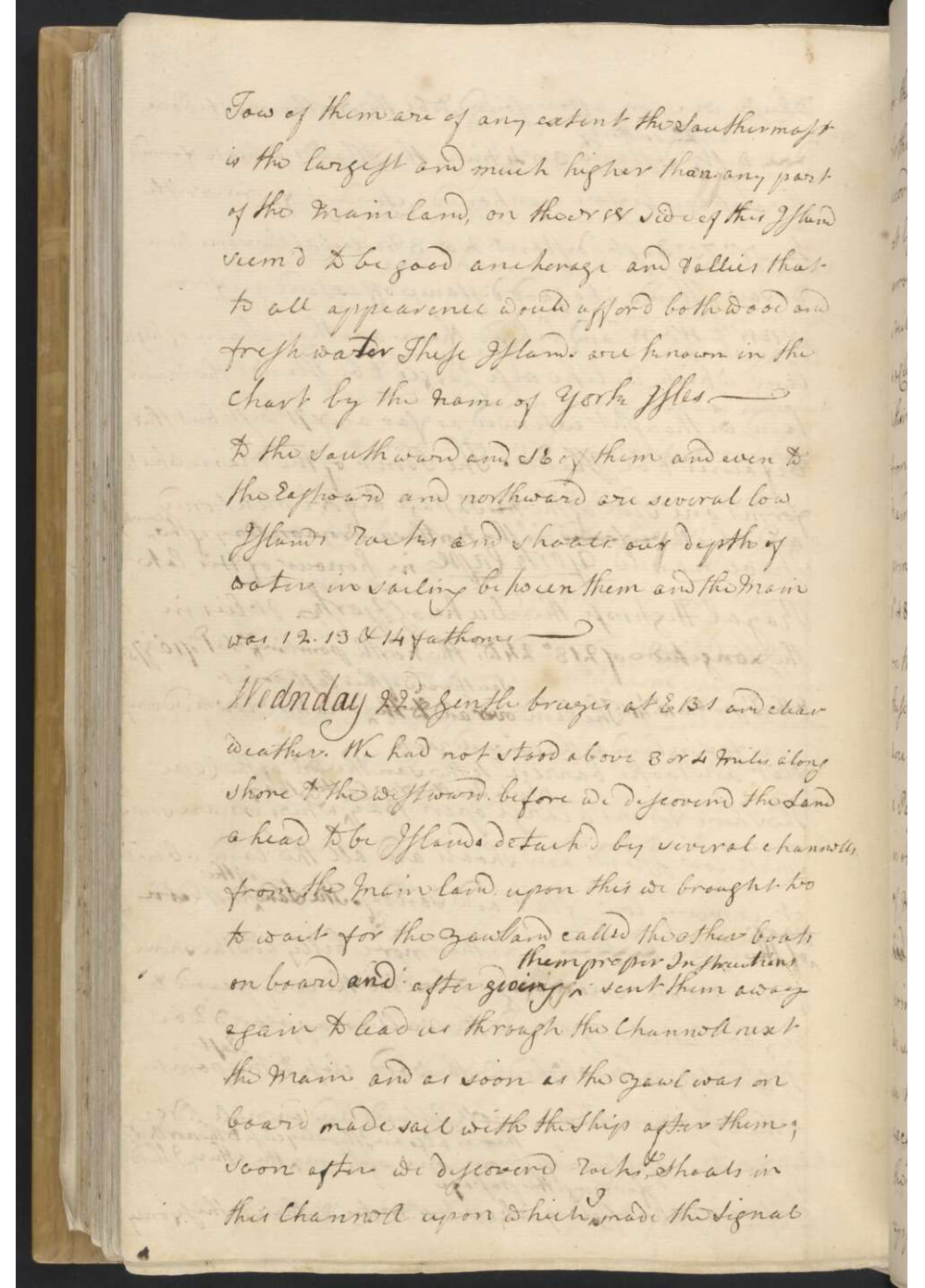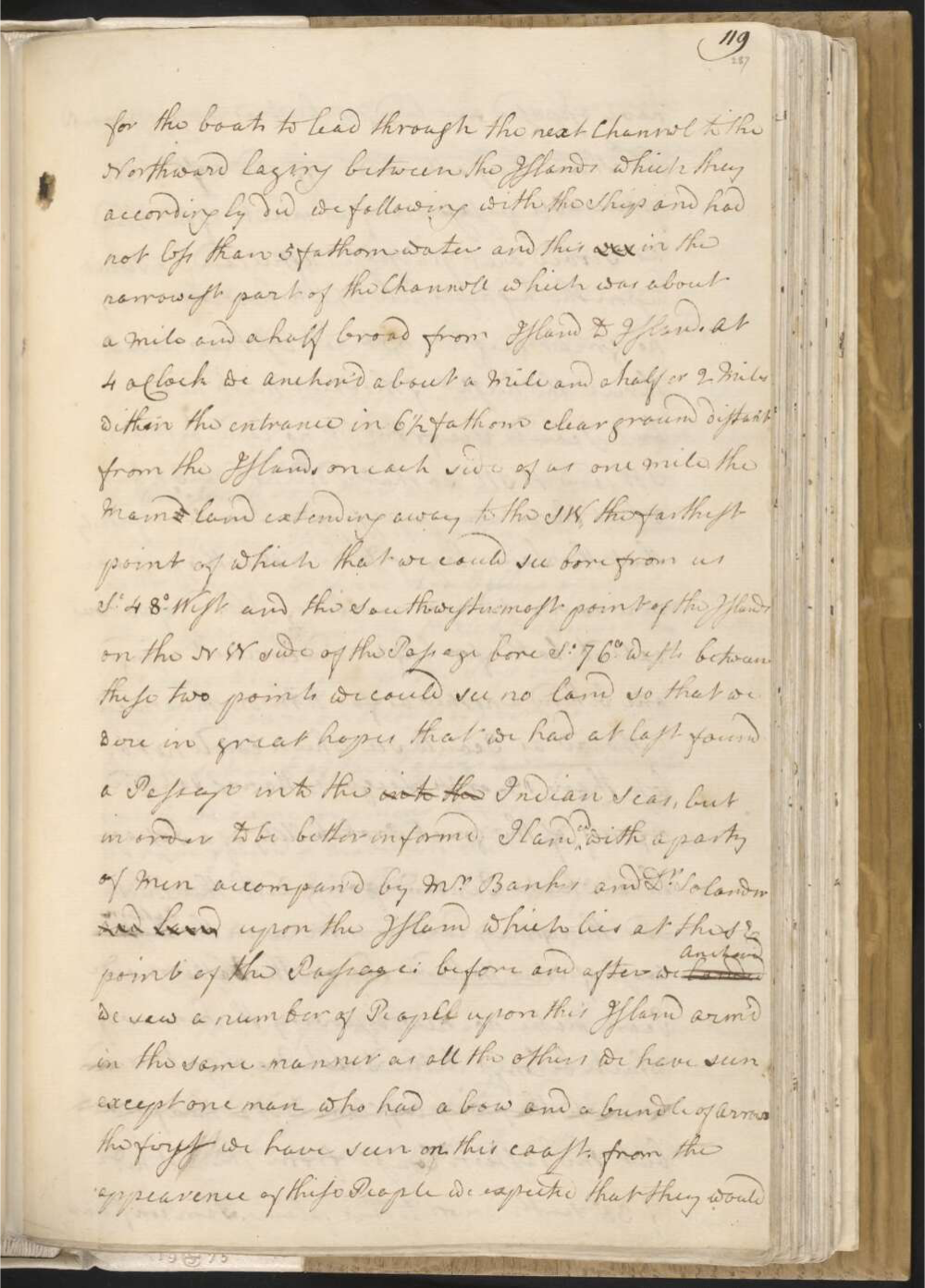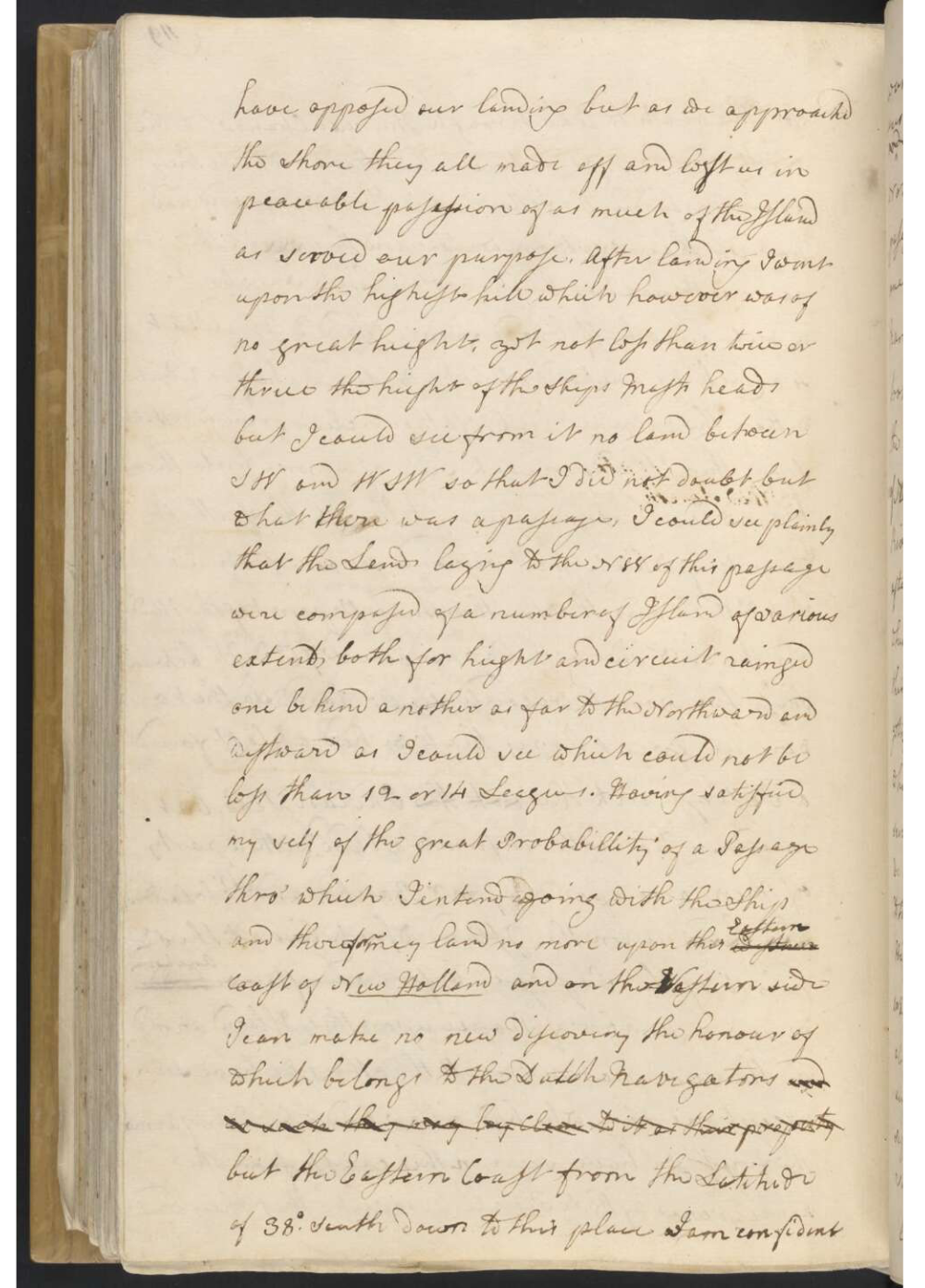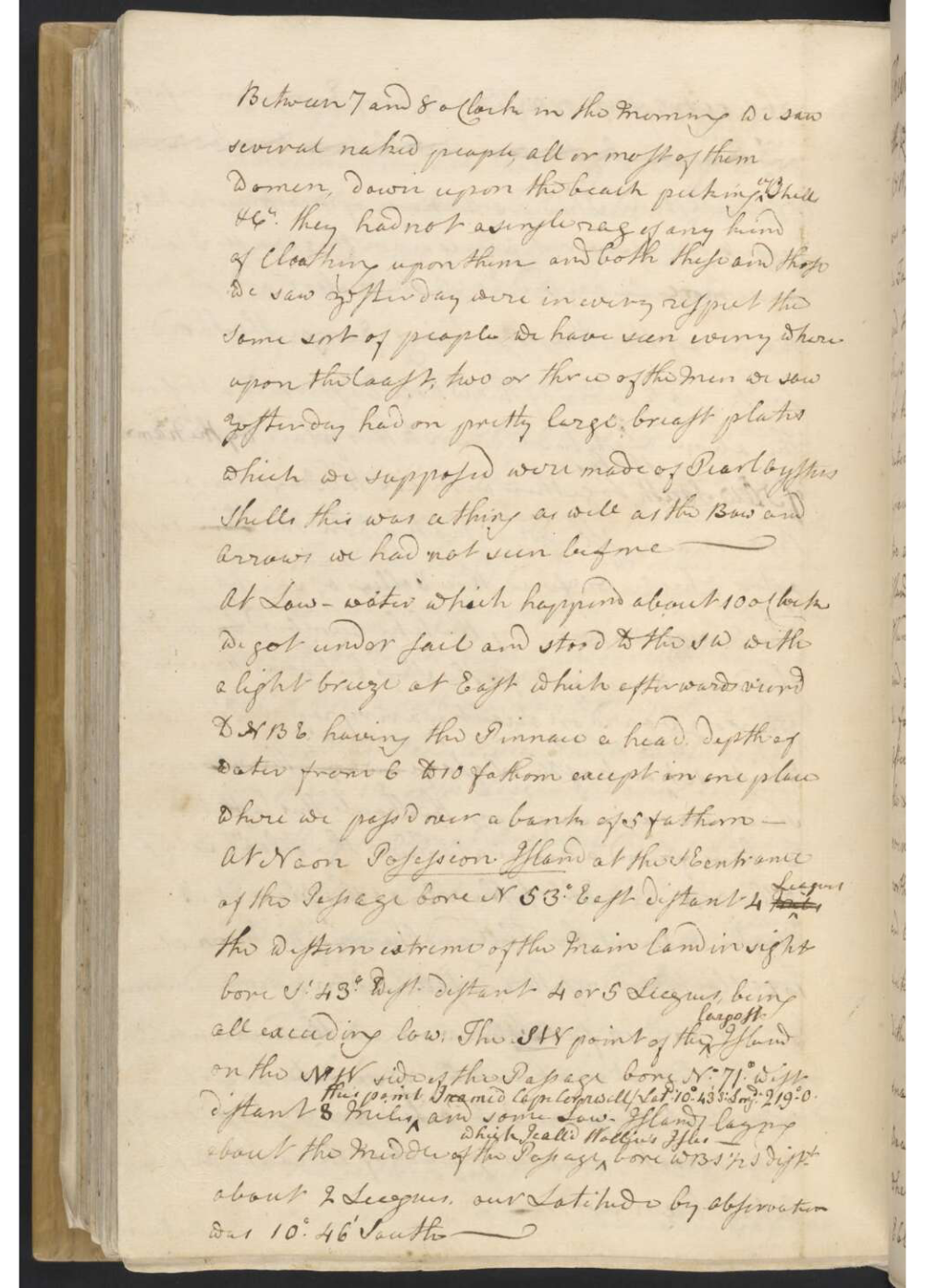The narrative of Australia’s colonised history began much earlier than Lieutenant James Cook’s departure from Plymouth, England in August 1768.
Read each section to delve deeper and broaden your understanding of how the colonising story unfolded in this country.
You will see the mechanics of successive governments moved from a plan to establish a penal colony on the east coast, to taking possession of the entire continent.
To learn more, select the section. You can drill down to read the story.
We recommend that in particular you read the early factual records, written by the British, that stand in the background in support of that story.

What were Lt. Cook’s instructions?
1. ‘Secret’ Instructions given to Cook by the British Admiralty on 30 July, 1768:
‘You are likewise to observe the Genius, Temper, Disposition and Number of the Natives, if there be any and endeavour by all proper means to cultivate a Friendship and Alliance with them, making them presents of such Trifles as they may Value inviting them to Traffick, and Shewing them every kind of Civility and Regard; taking Care however not to suffer yourself to be surprized by them, but to be always upon your guard against any Accidents.
You are also with the Consent of the Natives to take Possession of Convenient Situations in the Country in the Name of the King of Great Britain: But if you find the Country uninhabited, take Possession for his Majesty by setting up Proper Marks.1
2. The Instructions given to Lt. Cook by the British Royal Society’s President, James Douglas, Lord Morton, on 10 August 1768:
‘Have it in mind that shedding the blood of these people is a crime of the highest nature. They are human creatures, the work of the same Omnipotent Author, equally under his care with the most polished European, perhaps being less offensive, more entitled to his favour. They are the natural, and in the strictest sense of the word, the legal possessors of the several Regions they inhabit.
No European Nation has a right to occupy any part of their country or settle among them without their voluntary consent.’2
Location: Kamay Botany Bay
At Kamay Botany Bay, an Armed Attack occurred
Date: April 1770
While still in their boats, Lieutenant Cook attempted to communicate with the local Gweagal people living on the south headland of Kamay Botany Bay. The attempt was unsuccessful. After about 15 mins later, Lt. Cook opened fire to frighten the people away. In this manner the Endeavour crew violently forced their way onto the shore. Once landed, they then terrorised the local people into fleeing their property.
These actions were a major breach of instructions from the Admiralty of Great Britain and British Royal Society.
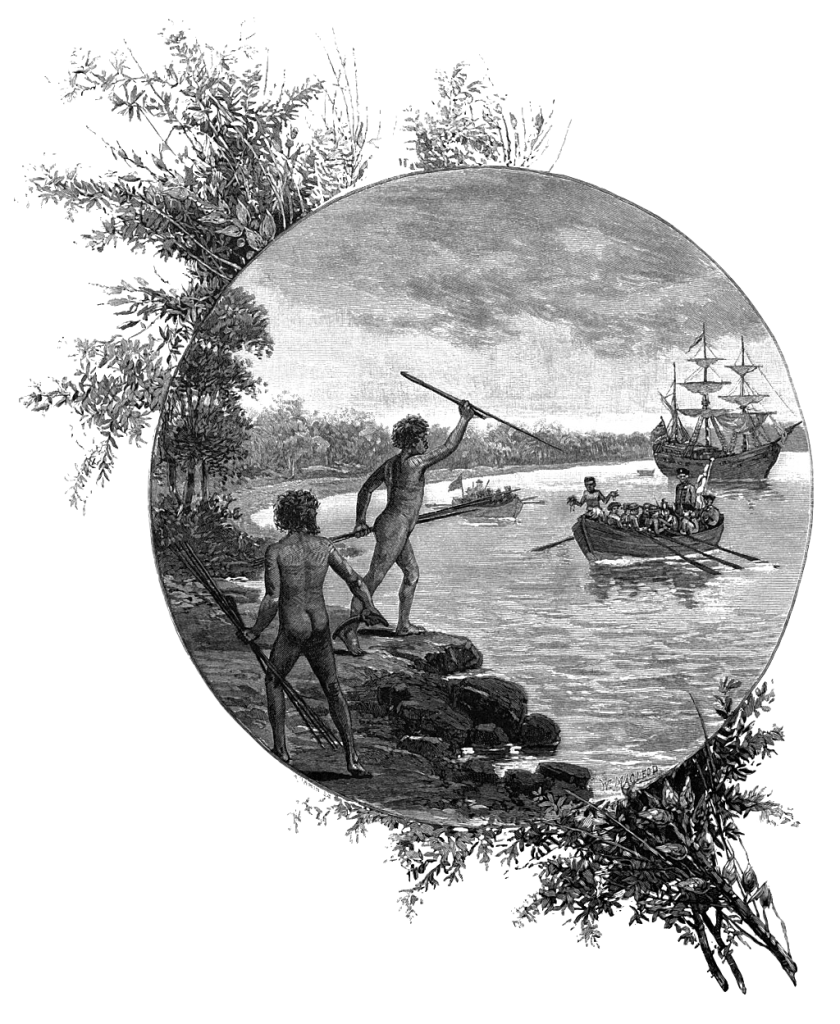
By Andrew Garran – Australia: the first hundred years, Public Domain, https://commons.wikimedia.org/w/index.php?curid=5068923
In addition, each of these actions were illegal under British law applying at the time.
1. Joseph Banks Diary Entry – April 1770
“At 1 we came to an anchor abreast of a small village consisting of about 6 or 8 houses. Soon after this an old woman followed by three children came out of the wood; she carried several piece[s] of stick and the children also had their little burdens; when she came to the houses 3 more younger children came out of one of them to meet her.
“…as soon as we approached the rocks two of the men came down upon them, each armed with a lance…They called to us in a harsh sounding language… shaking their lances and menacing, in all appearance resolved to dispute our landing to the utmost tho they were but two and we 30 or 40 at least.
“In this manner we parlyed with them for about a quarter of an hour, they waving to us to be gone, we again signing that we wanted water and that we meant them no harm.
“They remained resolute so a musquet was fird over them, the effect of which was that the Youngest of the two dropped a bundle of lances on the rock at the instant in which he heard the report; he however snatched them up again and both renewed their threats and opposition.
“A Musquet loaded with small shot was now fird at the Eldest of the two who was about 40 yards from the boat; it struck him on the legs but he minded it very little so another was immediately fird at him; on this he ran up to the house about 100 yards distant and soon returned with a shield.
“In the meantime we had landed on the rock. He immediately threw a lance at us and the young man another which fell among the thickest of us but hurt nobody;
“2 more musquets with small shot were then fird at them on which the Eldest threw one more lance and then ran away as did the other.
“We went up to the houses, in one of which we found the children hid behind the shield and a piece of bark in one of the houses… We were conscious from the distance the people had been from us when we fird that the shot could have done them no material harm; we therefore resolvd to leave the children on the spot without even opening their shelter.”
2. Lt. Cook’s Diary Entry – 29 April 1770
‘Sunday 29th In the PM winds southerly and clear weather with which we stood into the bay and Anchor’d under the South shore about 2 Mile within the entrence in 6 fathoms water, the south point bearing SE and the north point ^East, Saw as we came in on both points of the bay Several of the natives and afew hutts, Men women and children on the south shore abreast of the Ship to which place I went in the boats in hopes of speaking with them accompaned by Mr Banks Dr Solander and Tupia- as we approached the shore they all made off except two Men who seem’d resolved to oppose our landing – as soon as I saw this I orderd the boats to lay upon their oars in order to speake to them but this was to little purpose for neither us nor Tupia could understand one word they said. we then threw them some nails beeds &Ca a shore which they took up and seem’d not ill pleased with in so much that I thout that they beckon’d to us to come a shore but in this we were mistaken for as soon as as we put the boat in they again came to oppose us upon which I fired a Musquet between the two which had no other effect than to make them retire back where bundles of thier darts lay and one of them took up a stone and threw at us which caused my fireing a second Musquet load with small shott and altho’ some of the shott struck the man yet it had no other effect than to make him lay hold of a ^Shield or target ^ to defend hiself emmediatly after this we landed which we had no sooner done than they throw’d two darts at us this obliged me to fire a third shott soon after which they both made off, but not in such haste but what we might have taken one, but Mr Banks being of opinion that the darts were poisoned made me cautious how I advanced into the woods.
We found here a few Small hutts made of the bark of trees in one of which were four or five small children with whome we left some strings of beeds &Ca. a quantity of darts lay about the hutts these we took away with us.’ 4
Location: Possession Island, Torres Strait
Claiming Possession
Date: 22 August 1770
Question:
Was it Lieutenant Cook’s right to claim or take possession?
Lieutenant Cook’s records state the following…
‘After landing I went upon the highest hill which however was of no great height, yet not less than twice or thrice the height of the Ships Mast heads but I could see from it no land between SW and WSW so that I did not doubt but there was a passage, I could see plainly that the Lands laying to the NW of this passage were composed of a number of Island of various extent both for height and circuit rainged one be hind a nother as far to the Northward and Westward as I could see which could not be less than 12 or 14 Leagues.

Reproduction of an engraved drawing by Samuel Calvert (based on the original oil painting by John Alexander Gilfillan). Captain Cook Taking Possession of the Australian Continent on Behalf of the British Crown, AD 1770. Under the Name of New South Wales, 1865.
Image: Courtesy of the National Library of Australia
© National Library of Australia5
Having satisfied myself of the great Probabillity of a Passage, thro’ which I intend going with the Ship and therefor may land no more upon this Western Eastern coast of New Holland and on the Western side I can make no new discovery the honour of which belongs to the Dutch Navigators and as such they may lay claim to it as their property but the Eastern Coast from the Latitude of 38° South down to this place I am confident was never seen or viseted by any European before ^us and therefore by the same Rule belongs to great Brittan Notwithstand I had in the Name of his Majesty taken posession of several places upon this coast I now once more hoisted English Coulers and in the Name of His Majesty King George the Third took posession of the whole Eastern Coast from the above Latitude down to this place by the Name of New South ^Wales together with all the Bays, Harbours Rivers and Islands situate upon the same said coast after which we fired three Volleys of small Arms which were Answerd by the like number by from the Ship this done we set out for the Ship but were some time in geting on board on accout of a very rappid Ebb Tide which set ^NE out of the Passage away to the NE ever sence we came in among the Shoals this last time we have found a Moderate Tide the Flood seting to the NW and Ebb to the SE. at this place it is High-water at the Full and Change of the Moon about 1 or 2 o’Clock and riseth and falls upon a perpendicular about 10 or 12 feet.’6
We saw on all the Adjacent Lands and Islands a great number of smooks a certain sign that they are Inhabited and we have dayly seen smooks on every part of the coast we have lately been upon
Between 7 and 8 oClock in the Morning we saw several naked people, all or most of them women, down upon the beach picking up Shells, they had not a single rag of any kind of Cloathing upon them and both these and those we saw yesterday were in every respect the Same sort of people we have seen every where upon the Coast; two or three of the Men we saw Yesterday had on pretty large breast plates which we supposed were made of Pearl Oysters Shells this was a thing as well as the Bow and Arrows we had not seen before —
Location: At Port Jackson
The First Fleet
Date: January 26 1788
Many will not be aware of the detail surrounding the First Fleet’s arrival.
Having being commissioned in the United Kingdom in 1787, the First Fleet was sent by the British authorities in that year. How many of us know that the fleet consisted of no less than 11 ships, and those ships were filled with some 1400 people? They began to disembark, and to settle at what is now known as Sydney Cove.
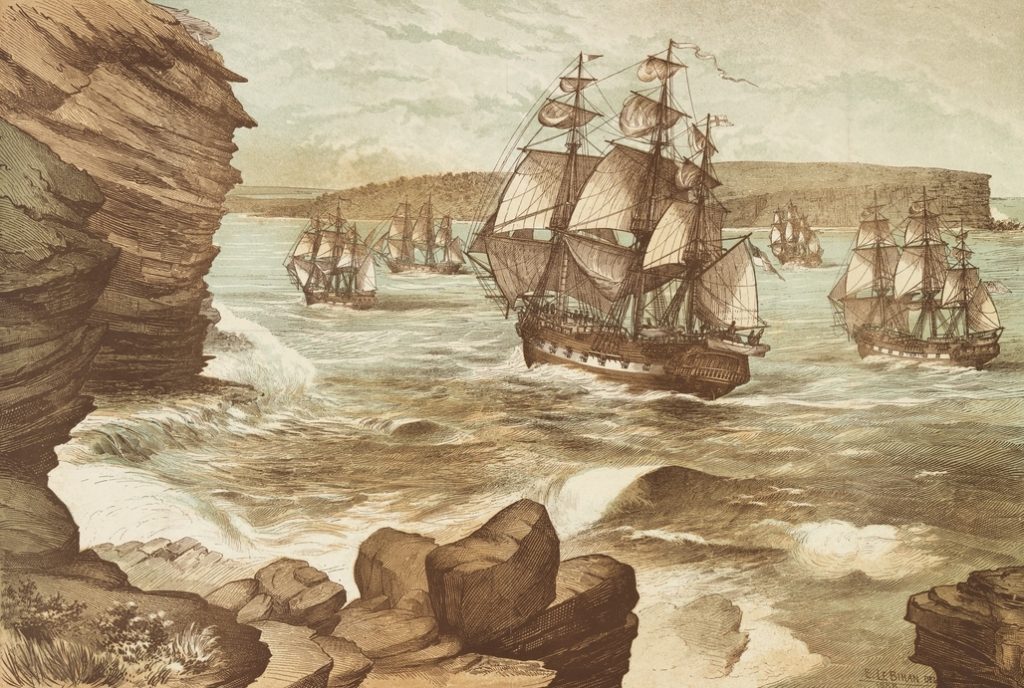
Lithograph of the First Fleet entering Port Jackson, 26 January 1788, by Edmund Le Bihan7
On 7 February 1788 Governor Phillip conducted a ceremony, formally taking possession and establishing a colony.
All these factual colonising actions took place … without the consent of the already legal possessors outlined in the British Royal Society Instructions!
Location: East of the Blue Mountains
The First Wave of Colonisation
Date: 1788 – 1815
Spreading out from Sydney Cove, for almost three decades the first wave of colonisation fell mainly on the First Nations who belonged to Country on the thin strip of land between the Pacific Ocean Coast and the Great Dividing Range.

To be sure, explorers, escaped convicts and others did advance inland. Nevertheless, it was that narrow strip of land, and the many First Nations that belonged to it that was faced with the primary impact of colonisation. This played out over some time as establishing the penal colony, and the first settlers taking up land grants, extended to the North and South.
With the acquisition of land gathering pace, so did First Nations resistance. Conflict escalated as push back was launched under the leadership of prominent warrior Pemulwuy and others. This conflict led to atrocities against First Nations people such as the Appin Massacre.
This initial impact went on for 27 years – East of the mountains. And then it was 1815.
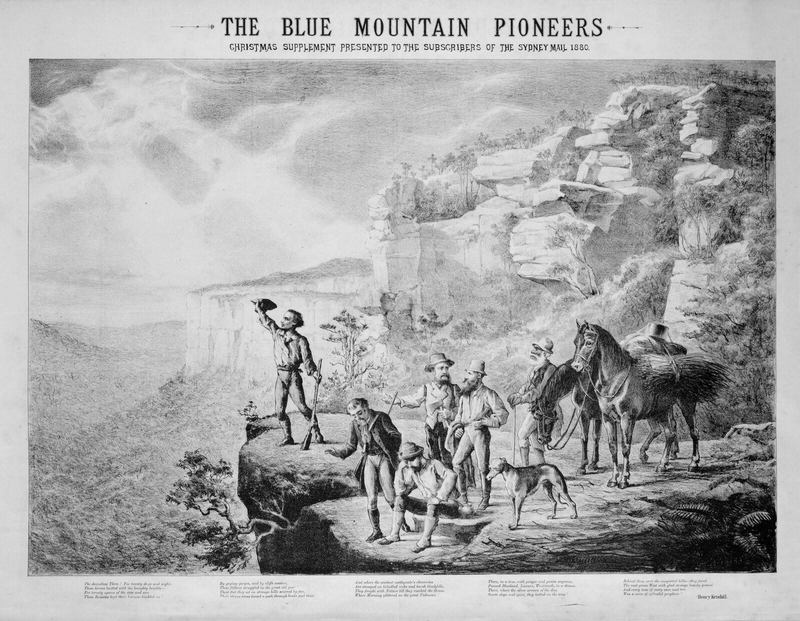
Land was cleared, fences were built, and much of the native fauna disappeared. It became impossible for the Wiradyuiri to continue to use the land they had been living on for millennia.
The First Peoples finally began a resistance. Under the leadership of warriors like Windradyne they launched a series of widespread attacks against the settlers around the Bathurst area. In response, on 14 August 1824 Governor Brisbane proclaimed martial law. Troops and local landholders were ruthless in their attacks on the Wiradyuri.
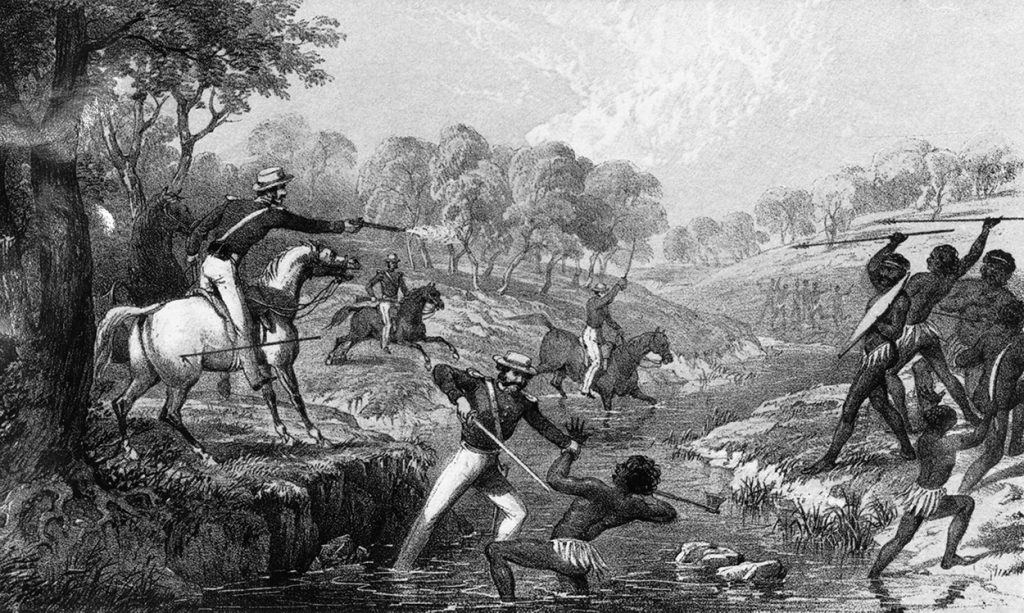
Of the numerous massacres that took place in the Bathurst region, three major examples are: the Bathurst Plains (6 Aboriginal people and 1 coloniser killed), the Turon River (45 Aboriginal people killed), and Mudgee/Rylstone (16 Aboriginal people killed).
Although the Bathurst massacres were a particularly brutal example of the ‘Frontier Wars’, there were many other similar massacres right across the continent over the next hundred years. Professor Lyndall Ryan and her research team at the University of Newcastle have mapped the locations where massacres took place.
Their interactive map, Colonial Frontier Massacres in Central and Eastern Australia 1788-1930, shows the locations of places where there is good evidence that massacres occurred during these years.8
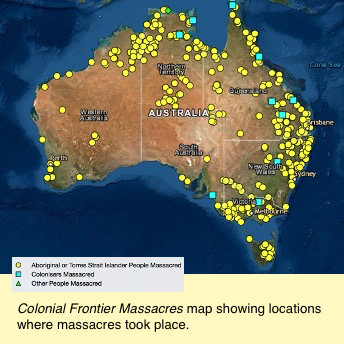
Figure 1: Ryan, ‘Map’. https://c21ch.newcastle.edu.au/colonialmassacres/map.php (accessed 18/01/2022).The Newcastle research team estimate that 350 – 400 massacre sites will have been documented by the end of 2021.
The Details
This site has targeted the key elements of the story in understanding the problems brought upon the First Nations People of Australia.
We have conducted detailed research examining the records, in relationship to background and causes Colonisation has had on Australia.
Pamela Lane our researcher has put together the following paper that captures the essence of the story for everyone to understand.
The Story can be downloaded at the bottom of the story.
Be a part of the Story
Claim the Date’ to join us for an Act of Recognition Gathering, Saturday 2nd March 2024.
- Admiralty of Great Britain, ‘Secret Instructions’, 30 July,1768. https://www.foundingdocs.gov.au/resources/transcripts/nsw1_doc_1768.pdf [↩]
- Lord Morton, James Douglas. Hints Offered to the Consideration of Captain Cook … 10 August 1768, Papers of Joseph Banks, MS 9, Series 3, Item 113, National Library of Australia. [↩]
- By Andrew Garran – Australia: the first hundred years, Public Domain, https://commons.wikimedia.org/w/index.php?curid=506892 [↩]
- James Cook, ‘Voyaging Accounts – Daily Entries’ 21 April 1770, p. 225.
http://southseas.nla.gov.au/journals/cook/17700421.html (accessed 15 May 2019 [↩] - Reproduction of an engraved drawing by Samuel Calvert (based on the original oil painting by John Alexander Gilfillan). Captain Cook Taking Possession of the Australian Continent on Behalf of the British Crown, AD 1770. Under the Name of New South Wales, 1865. Image: Courtesy of the National Library of Australia © National Library of Australia [↩]
- Transcription of National Library of Australia, Manuscript 1 page 287, 2004 Published by South Seas, https://nla.gov.au/nla.cs-ss-jrnl-cook-17700822 [↩]
- E. Le Bihan – http://www.acmssearch.sl.nsw.gov.au/search/itemDetailPaged.cgi?itemID=845003 Colour lithograph of the First Fleet entering Port Jackson on January 26 1788, drawn in 1888. Creator: E. Le Bihan Public Domain File:The First Fleet entering Port Jackson, January 26, 1788, drawn 1888 A9333001h.jpg Created: 22 November 2013 [↩]
- Figure 1: Ryan, ‘Map’. https://c21ch.newcastle.edu.au/colonialmassacres/map.php (accessed 18/01/2022).The Newcastle research team estimate that 350 – 400 massacre sites will have been documented by the end of 2021. [↩]
